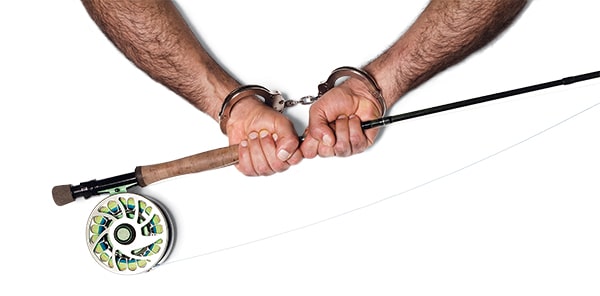
mpforbidden
I cut my teeth saltwater fishing in the deep south, South Brooklyn, New York, that is. Mostly, I fished the Gravesend Bay section near Coney Island that actually was the entrance to New York Harbor. The bike path (as we called it) stretched for approximately 3 miles from Bay Parkway to the 69th Street Pier. Fishing was extremely good from the months of May through December. However, it was the winter fishing from January through March that could be interpreted as epic. “How could that be?” you might ask. Everyone knew that striped bass migrate up the Hudson River in December to winter way north until April, when they migrate south and out into the ocean. It was at this time in my early striper years that I learned a life-changing fishing lesson. I found out about the Owls Head Water Pollution Control Plant, which was located less than an eighth of a mile past the end of the bike path. You see, the pollution plant had a discharge that sent warm water bubbling out of it and kept the waters around the plant a full 10 to 15 degrees warmer throughout the winter than were its surrounding waters in the harbor. Baitfish and striped bass would winter over in and around this warm-water discharge. Stripers were there all the time, and anglers in the know were able to successfully catch fish all winter long. This awarded us a year-round striper fishery. I was sworn to secrecy about this hot spot. Because the plant was fully operational 24 hours a day and on private city-owned property, fishing was not permitted inside of the plant’s grounds. However, that did not stop a few hardy (or should I say addicted) souls. We knew that the plant had no security at night so we did all our fishing from the bulkhead of the plant after dark. It was easy enough to just walk into the plant quietly and make your way to the docks where the hot water spewed out. Fish any moving tide and you were assured of a successful night of catching and releasing. Try to fish these waters during daylight hours and you were politely greeted and quickly escorted off the premises. It was at this very location where I first learned of some fantastic fishing in areas that were deemed off-limits to anglers. Off-limit areas meant fishing pressure was probably going to be very low.
As the years went by, I learned of other wonderful fisheries located around the Big Apple that received low pressure. There was the LILCO (Long Island Lighting Co.) power plant located in Northport, New York. Striped bass would winter by the thousands at this location. If the smokestacks were burning, the fish would be piled up along the beach as well as right at the plant’s entrance. Fishing inside the plant was phenomenal. I cannot tell you how many nights we sneaked into the plant (via a hole in the fence) to fish on top of the concrete turbines where the hot water poured out in order to catch and release 20 to 30 stripers a night. I saw fish to 50 pounds caught at the LILCO plant. Sneaking into this privately owned corporate plant was by no means legal; however, we felt the rewards were far worth the risks. Sometimes security would find us fishing and, before politely asking us to leave the property, would ask what the fish were feeding on.
When it comes to fishing waters that are so-called “off-limits,” anglers really need to make sure they have truly weighed each specific situation. While I certainly would never suggest walking onto the private land of a homeowner and trespassing on their property, it seems to take on a different meaning when doing it on commercial property.
While I was living in Stamford, Connecticut, there was an area known as Holly Pond. Between the towns of Stamford and Darian, the Noroton River flowed and spilled into Long Island Sound at Holly Pond. Striped bass would come in from the sound and look for food in the brackish water. There was a 200-yard-long rock and mussel strewn dam that bridged these two towns with signs stating “No fishing on the dam.” At times, there might be six to eight fly-anglers fishing both sides of the dam. We were all fishing illegally but, man, was it worth it. The same held true at the backside of the Remington Corp. in Bridgeport, Connecticut. A hot-water outflow offered excellent year-round striper fishing. The backside of the Remington parking lot happened to back up to the hot water.
Fishing out of a boat does not necessarily make you legal either, especially inside the Brooklyn Navy Yard in New York City. It was totally off-limits to boaters; however, the fishing inside the shipyard was phenomenal.
After having spoken to many anglers up and down the Atlantic Coast, Florida’s Gulf coast and northern California, it appears everyone seems to have been haunted by forbidden waters. Posted signs, buoys and fenced-in areas seem to be the commonality of these less pressured spots. While I believe it is common knowledge that most fly-fishermen are personified as the classy and more etiquette-oriented of all anglers, do we lose our je ne sais quoi if we choose to fish forbidden waters? So there lies the conundrum. Wasn’t it Shakespeare who once said, “To fish or not to fish, that is the question”? While I certainly do not condone fishing a newfound location X that comes with posted signs, each of us has to decide for ourselves what is morally right. So is fishing forbidden waters worth bending, stretching or, perhaps more accurately put, testing the law?









